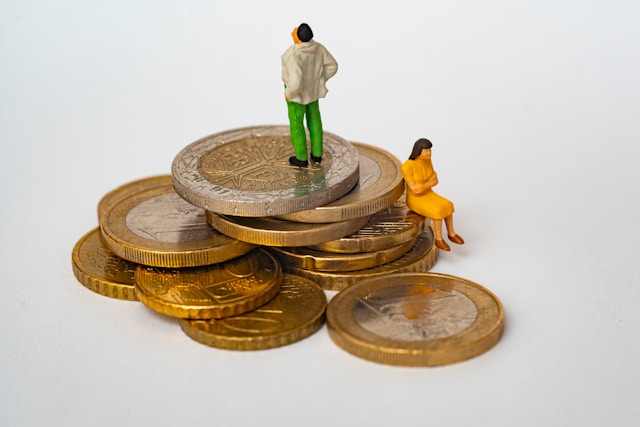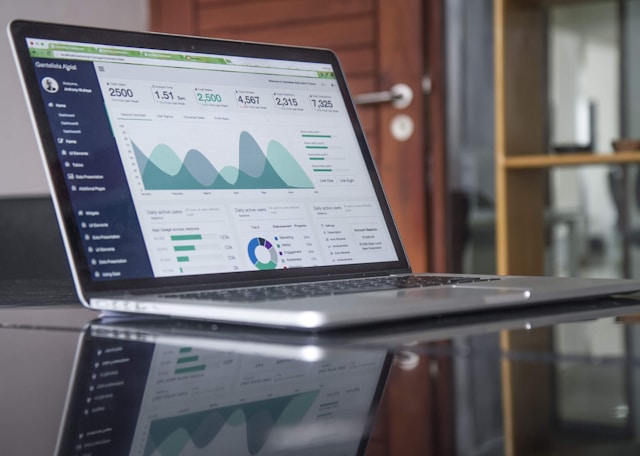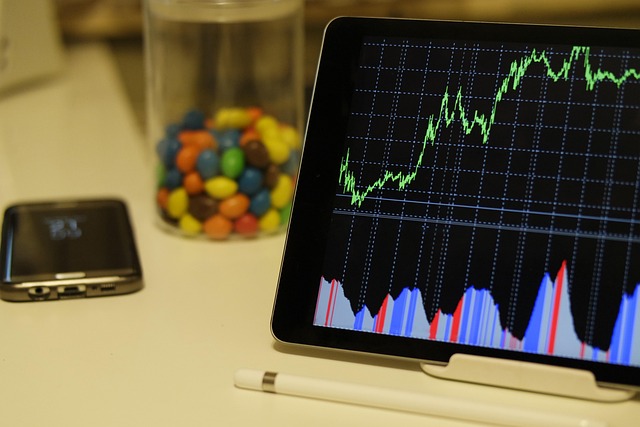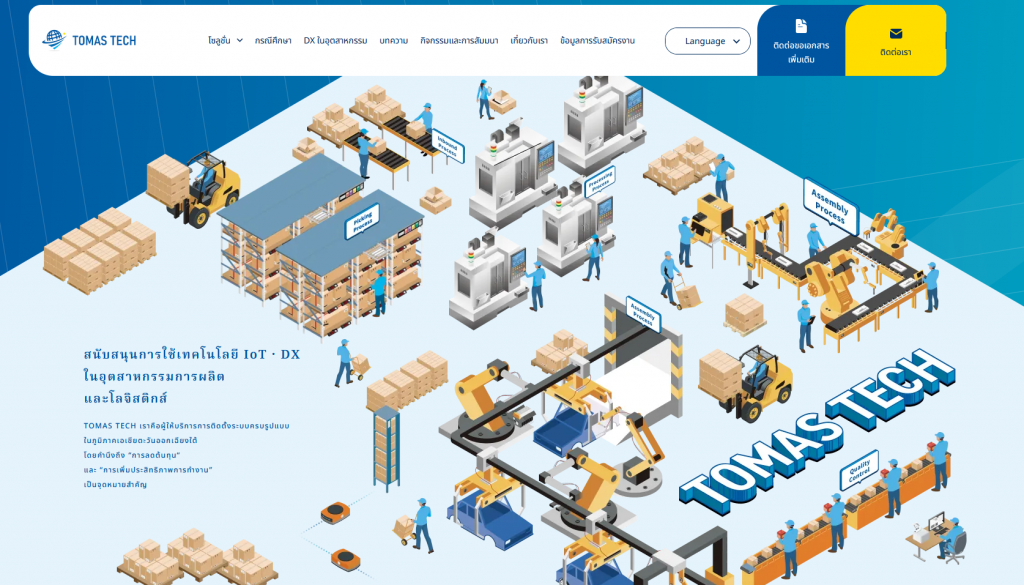Thailand’s manufacturing industry is now at a major turning point. External pressures such as rising energy prices, labor costs, and soaring raw materials are fundamentally shaking the profit structure of factories.
While there are benefits from economic systems such as BOI preferential treatment and FTAs, competition with ASEAN countries has also intensified.
In order to achieve sustainable growth in such an environment, it is essential to reduce costs and fundamentally reform through DX that do not depend on external factors.
In this article, we will explain in detail the challenges faced by manufacturing sites in Thailand, their countermeasures, and the immediate improvement measures that TOMASTECH supports.
What is the background of the Thai manufacturing industry being forced to “reform the cost structure”?

Thailand’s manufacturing industry is now facing a situation where traditional cost structures cannot maintain sustainable competitiveness.
Changes in the external environment, such as soaring energy prices, rising raw material costs, and raising the minimum wage, are putting pressure on corporate profits. This is especially a serious challenge for small and medium-sized manufacturing industries that are difficult to pass on prices.
In addition, competition for location in the ASEAN region is becoming more intense, and companies based in Thailand are being forced to reaffirm their own superiority and at the same time improve from within = structural reform.
Global soaring energy prices and raw material costs
The rise in global resource prices has also hit Thailand’s domestic manufacturing industry hard.
In addition to rising electricity prices, the prices of key raw materials such as steel, copper, resins, and semiconductors have also remained high, pushing up the overall cost of products.
Especially for companies that are highly dependent on imported raw materials, the impact of exchange rate fluctuations cannot be overlooked.
Without a mechanism that can absorb these cost increases, disadvantages in price competition are inevitable.
Rising minimum wage and labor shortages put pressure on management
Thailand has been gradually raising the minimum wage since 2024, leading to an increase in labor costs at manufacturing sites.
On the other hand, it is becoming difficult to secure skilled human resources due to the departure of young people from the manufacturing industry and the retirement of skilled workers.
If the proportion of overtime and shift work increases due to labor shortages, a vicious cycle will occur that leads to further cost increases.
These cannot be solved by superficial savings and require a structural overhaul.
Bangkok Post (June 27, 2024). “All Bangkok workers to get B400 minimum wage from July 1.”
Intensifying competition for location due to BOI preferential treatment and FTAs
BOIs (investment incentive schemes) and free trade agreements (FTAs) are important tailwinds for Thailand’s manufacturing industry, but they also provide a comparison with neighboring countries such as Indonesia and Vietnam.
As countries accelerate tax incentives and infrastructure development, self-help efforts such as improving on-site productivity and optimizing costs are essential to break away from mere cost competition.
In order to maintain its superiority as a base, it is necessary to accumulate internal improvements as well as external conditions.
Source:
Board of Investment Thailand (BOI), “Investment Incentive” page, accessed July 26, 2025,
Field-led cost reduction perspective required for the Thai manufacturing industry

No matter how severe the external environment is, there are things that can be done at the manufacturing site.
In order for the Thai manufacturing industry to maintain its competitiveness sustainably, it is essential to identify “hard-to-see waste” and accumulate data-based improvements from the field.
Rather than simply cutting costs, “site-led” initiatives that fundamentally review the use of processes, personnel, and equipment are essential solutions for cost reduction in Thailand’s manufacturing industry.
Productivity, yield, and equipment utilization rate are captured as indicators
The first step to improvement is to “understand the current situation with numbers”. Many companies tend to rely on sensory improvements to make inefficient decisions.
Productivity can be objectively measured by indicators such as OEE (Overall Equipment Effectiveness), yield rate, defect rate, and equipment utilization rate.
These metrics can help you identify where losses are and prioritize improvements to avoid wasted investment and misguided responses.
“Visualizing” waste of equipment, personnel, and resources
At many factories in Thailand, the work content, waiting time, travel distance, and idle time of equipment for each process are judged by a “somewhat on-site feel”.
By promoting visualization, for example, “this equipment stops for 20 minutes every day in the afternoon” or “people are waiting in process A”, etc., which can lead to inefficiency, which can lead to costs.
The “visualization” of waste is directly linked to the elimination of personal dependency and the standardization of operations, contributing to the optimization of manufacturing costs.
How to proceed with KPI setting and prioritization of measures
To maximize the effectiveness of on-site improvements, it is essential to design key performance indicators (KPIs) and prioritize improvement measures.
It is not realistic to “change everything at once”, and it is important to decide where to start in order to make the most of limited resources.
A process like TOMASTECH’s that identifies issues based on actual data and designs improvement steps step by step is a rational approach that results in the most effective at the lowest cost.
Examples of “immediate on-site improvement” supported by TOMASTECH

In order to achieve cost reduction, “improvement measures that produce immediate results” are extremely important in management decisions.
At TOMASTECH, we have introduced and established a system to visualize on-site performance data and optimize the operation of equipment and personnel on a small start.
Here are some of the immediate support that TOMASTECH actually provides.
Line optimization through actual collection and operation monitoring
The first thing that is easy to see the effect is the visualization of the operating status of the production line.
Line optimization through actual collection and operation monitoring
The first thing that is easy to see the effect is the visualization of the operating status of the production line.
TOMASTECH uses sensors and performance collection terminals to record and visualize the operating hours, downtime and reasons of each facility in real time.
This clarifies the causes of bottleneck processes and frequent micro-stops, making it easier to take countermeasures.
In one plant, the utilization rate of the main line improved from 85% to 92%, resulting in an 8% reduction in labor costs per product.
Visualization of progress, inventory, and man-hours through MES introduction
In the field where progress delays and inventory backlogs can only be grasped “somehow”, the introduction of MES (Manufacturing Execution System) is effective.
The MES provided by TOMASTECH can grasp each work order, production quantity, work-in-progress retention, man-in-progress performance, etc. in time series, allowing site leaders and managers to make immediate decisions and instructions.
In addition to reducing arrangement errors and excess inventory, improvements can be achieved in the shortest distance by visibly vising the “waste of movement” at the entire site.
Optimal allocation of work time with IoT×motion sensors
In order to improve the work efficiency of personnel, it is necessary to know “how much time is spent on what in which process”.
TOMASTECH uses IoT and motion sensors to automatically obtain the flow of workers and the time allocation for each task.
For example, if you can grasp the fact that “it takes more than 5 minutes on average to pick parts”, it is possible to improve by shortening the flow line and changing the shelf arrangement.
In this way, by linking process improvement with the reallocation of human resources, it is possible to create a large cost impact with minimal burden.
“Structural cost reduction” realized by production DX in the Thai manufacturing industry

Only after achieving results with immediate improvements is essential structural reform is necessary.
In order for the Thai manufacturing industry to increase profitability in the long term, it is essential to focus on production DX with an eye on “total optimization” rather than partial optimization.
TOMASTECH supports the elimination of individualization and information fragmentation through the construction of a data platform and business standardization that involves management and management.
Here are some measures that will lead to medium- to long-term structural cost reductions.
Manufacturing data management that can be used in management with BI tools
Actual data and KPIs collected in the field are meaningless if they are simply “recorded”.
By linking it with BI tools, TOMASTECH aggregates and analyzes on-site data in real time and converts it into reports that can be used for management decisions.
For example, by visualizing the changes in utilization rate, cost, and labor costs for each line, it becomes clear where to spend costs and where to reduce.
As a result, the accuracy of investment decisions and the ability to execute overall strategies will increase, leading to an improvement in the company’s structure.
Information sharing platform that breaks away from individualization and paper forms
Paper forms and Excel-dependent operations lead to a black box in the field. bear
The process stops just because the person in question rests, the past records cannot be found, and the procedure for each task is different for each person.
These are all breeding grounds for increased costs.
TOMASTECH supports the standardization of each process, equipment, and operation, as well as the digitization of data associated with them.
By creating a system that allows anyone to work with the same procedures and information, we will reduce education costs and human error, and fundamentally eliminate the dependency of the field from the ground.
Waste reduction through process traceability and quality stabilization
Remanufacturing and rework due to poor quality are also issues that cannot be ignored in Thailand manufacturing cost reduction.
TOMASTECH supports the establishment of a “traceability system” that links and manages production results, inspection information, material lots, and worker data for each process.
In the unlikely event of a malfunction, it is possible to immediately track what happened in which process, making it possible to identify the cause early and prevent recurrence.
Consistent quality is directly linked to both long-term reliability and cost savings.
TOMASTECH supports the transformation to a “profit structure” that is not affected by the external environment.

The external environment surrounding the manufacturing industry, such as rising energy prices, labor costs, and currency fluctuations, is expected to continue to become more unstable.
In order to generate stable profits without being overwhelmed by these changes, it is necessary to fundamentally strengthen the “profit structure” as a company.
In order for the Thai manufacturing industry to remain competitive, it is essential to accumulate internal improvement efforts and data-driven decision-making rather than relying on external systems and environments.
Why Thailand’s manufacturing base is in the spotlight again
As the movement to break away from excessive dependence on China accelerates globally, Thailand is once again attracting attention as a “China + One” production base.
Factors such as geographical advantages, infrastructure development, and the spread of FTAs are in the background.
On the other hand, neighboring countries are also increasing their presence with tax incentives and low labor costs, and in the future, we are moving to an era where “strength in the field” is questioned in addition to “superiority as a base”.
How to win the competition for tax and labor costs with other countries
Compared with neighboring countries such as Vietnam and Indonesia, Thailand has a certain advantage in the quality of infrastructure and human resources, but in some cases it pales in terms of tax system and labor costs.
In this context, the key to differentiation is “high productivity”. “Efficiency”, such as how to increase the added value per unit of personnel and how stable operation can be with limited equipment, determines long-term cost competitiveness.
Developing “factory data” that leads to management decisions
Companies that are flexible in responding to external changes have common characteristics. That is, “the data necessary for decision-making is always available.”
Companies that can immediately visualize the state of the site and choose the best course of action from multiple options can calmly respond to sudden demand fluctuations and cost changes.
TOMASTECH supports the development of a “factory data platform” that integrates equipment, operation, and process data, and supports the creation of such a flexible management structure.
Summary|What is needed for the Thai manufacturing industry is “transformation from the field”
Thailand’s manufacturing industry is now faced with a big choice. Factors such as soaring raw material and labor costs, as well as instability in the external environment, cannot be controlled by the company’s own efforts.
However, companies that grow even in the face of such headwinds are always changing from the “field”.
Eliminate dependency, visualize processes, make decisions based on data, and save and automate labor through the introduction of MES and IoT. This accumulation supports a strong profit structure that is not affected by the external environment.
At TOMASTECH, a professional team familiar with Thailand’s manufacturing sites provides consistent support from understanding the current situation to improvement design, system introduction, and retention support.
Rather than simply introducing tools, building an “improved system that can run on its own” is what we aim to support.
Now is the time to take a step to change profits from the field.
If you are a company that wants to achieve structural cost reduction, please feel free to contact us.



